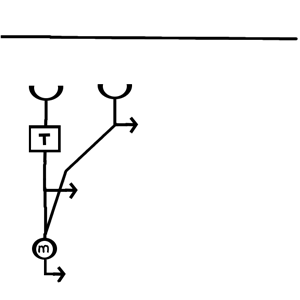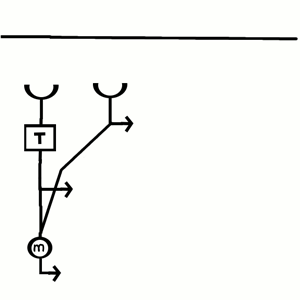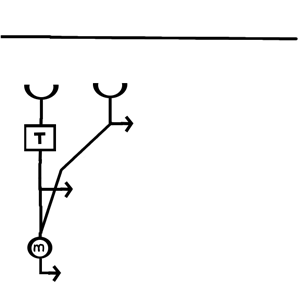The implications of basing detector response on multiplied outputs from two detectors, one of which is temporally delayed, is that the highest response will be generated by motion that corresponds best with the length of the delay. In this section, we illustrate how a delay that is either too long or too short for a given input can both attenuate the resulting output.
The top line represents the input motion as it travels through time. The next two lines represent the output from the second detector and the first detector after the temporal delay, and the last line represents the output of the unit obtained by multiplying the outputs from the previous two lines.
Here, T indicates the temporal delay and m represents the multiplication.

In this example, the length of the delay allows the output from each of the two detectors to “line up” to give a large output.

In this animation, the temporal delay is not long enough to produce a strong output.

In this animation, the temporal delay is too long to produce a strong output.
